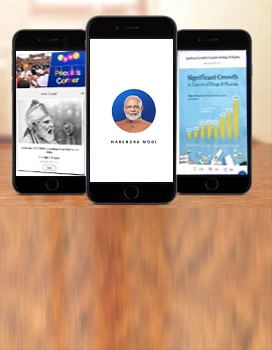The Union Cabinet, chaired by the Prime Minister Shri Narendra Modi, today approved continuation of the three umbrella schemes, merged into a unified central sector scheme namely ‘Vigyan Dhara’ of Department of Science and Technology (DST).
The scheme has three broad components:
- Science and Technology (S&T) Institutional and Human Capacity Building,
- Research and Development and
- Innovation, Technology Development and Deployment.
The proposed outlay for the implementation of the unified scheme ‘Vigyan Dhara’ is Rs.10,579.84 crore during the 15th finance Commission period from 2021-22 to 2025-26.
The merger of the schemes into a single scheme would enhance efficiency in fund utilization and establish synchronization among the sub-schemes/programs.
The primary objective of the 'Vigyan Dhara' scheme is to promote S&T capacity building as well as research, innovation and technology development towards strengthening the Science, Technology and Innovation ecosystem in the country. Implementation of the scheme will strengthen the S&T infrastructure of the country by fostering well-equipped R&D labs in the Academic Institutions.
The scheme endeavours to promote research in areas such as basic research with access to the international mega facilities, translational research in sustainable energy, water, etc. and collaborative research through international bilateral and multilateral cooperation. It will also contribute to building critical human resource pool to strengthen the science and technology landscape and expand the R&D base of the country towards improving the Full-Time Equivalent (FTE) researcher count. Focused interventions will be taken up to enhance the participation of women in the field of Science and Technology (S&T) with the ultimate goal of bringing gender parity in Science, Technology and Innovation (STI). The scheme would reinforce the efforts of the government towards promoting innovations at all levels, starting from school level to higher education, and for the industries and startups through targeted interventions. Significant support will be extended to increase collaboration between academia, Government, and also with industries.
All the programs proposed under the ‘Vigyan Dhara’ scheme would be aligned with the 5-year goals of DST towards realising the vision of Viksit Bharat 2047. The research and development component of the scheme will be aligned in line with the Anusandhan National Research Foundation (ANRF). Implementation of the scheme would follow the globally prevailing yardsticks while in alignment with the national priorities.
Background:
Department of Science & Technology (DST) acts as the nodal department for organising, coordinating and promoting S&T activities in the country. Three central sector umbrella schemes were being implemented by DST towards promoting Science, Technology and Innovation (STI) in the country viz. (i) Science and Technology (S&T) Institutional and Human Capacity Building, (ii) Research and Development and (iii) Innovation, Technology Development and Deployment. These three schemes have been merged into the unified scheme ‘Vigyan Dhara’.















